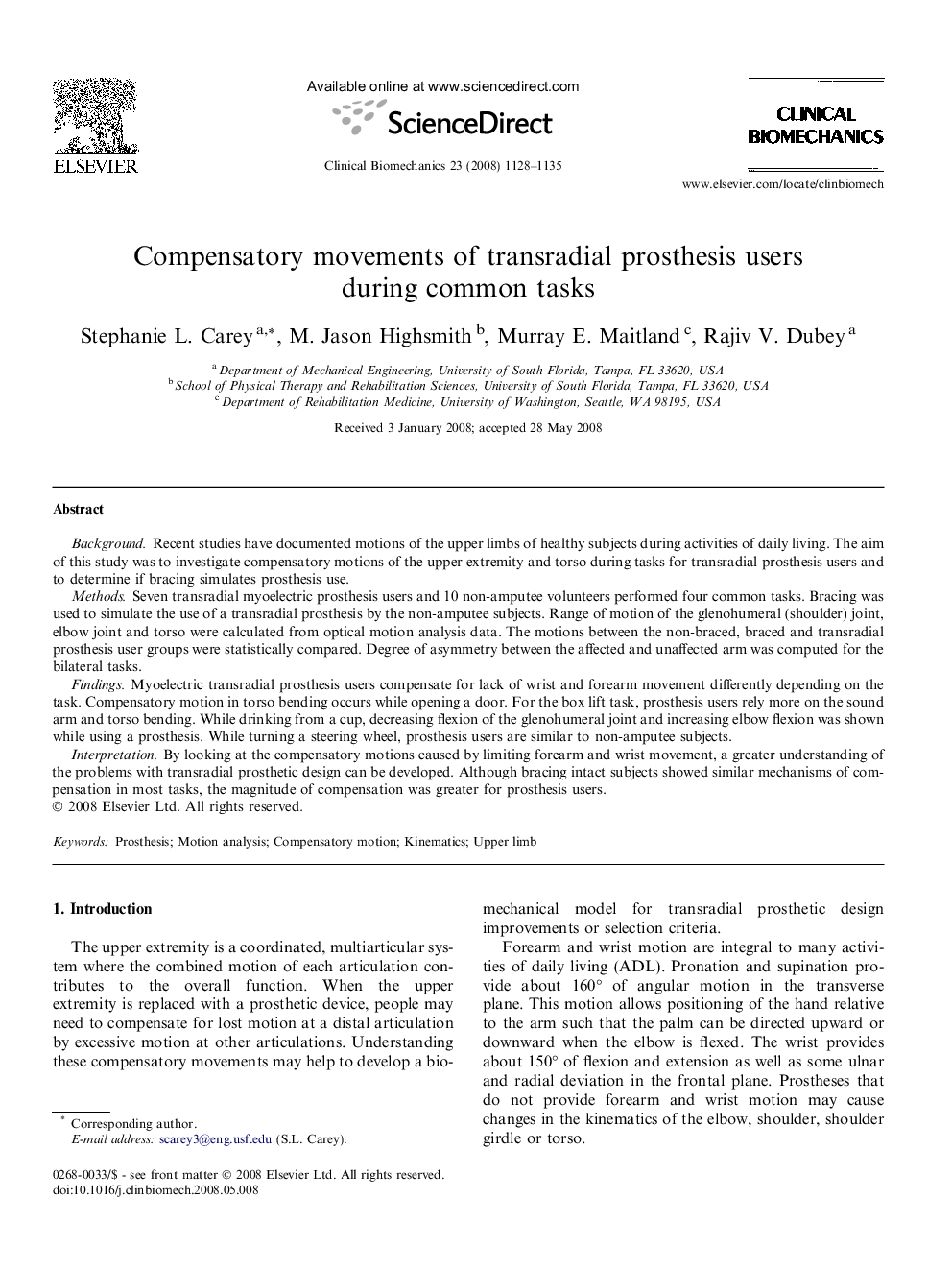| Article ID | Journal | Published Year | Pages | File Type |
|---|---|---|---|---|
| 4051162 | Clinical Biomechanics | 2008 | 8 Pages |
BackgroundRecent studies have documented motions of the upper limbs of healthy subjects during activities of daily living. The aim of this study was to investigate compensatory motions of the upper extremity and torso during tasks for transradial prosthesis users and to determine if bracing simulates prosthesis use.MethodsSeven transradial myoelectric prosthesis users and 10 non-amputee volunteers performed four common tasks. Bracing was used to simulate the use of a transradial prosthesis by the non-amputee subjects. Range of motion of the glenohumeral (shoulder) joint, elbow joint and torso were calculated from optical motion analysis data. The motions between the non-braced, braced and transradial prosthesis user groups were statistically compared. Degree of asymmetry between the affected and unaffected arm was computed for the bilateral tasks.FindingsMyoelectric transradial prosthesis users compensate for lack of wrist and forearm movement differently depending on the task. Compensatory motion in torso bending occurs while opening a door. For the box lift task, prosthesis users rely more on the sound arm and torso bending. While drinking from a cup, decreasing flexion of the glenohumeral joint and increasing elbow flexion was shown while using a prosthesis. While turning a steering wheel, prosthesis users are similar to non-amputee subjects.InterpretationBy looking at the compensatory motions caused by limiting forearm and wrist movement, a greater understanding of the problems with transradial prosthetic design can be developed. Although bracing intact subjects showed similar mechanisms of compensation in most tasks, the magnitude of compensation was greater for prosthesis users.
